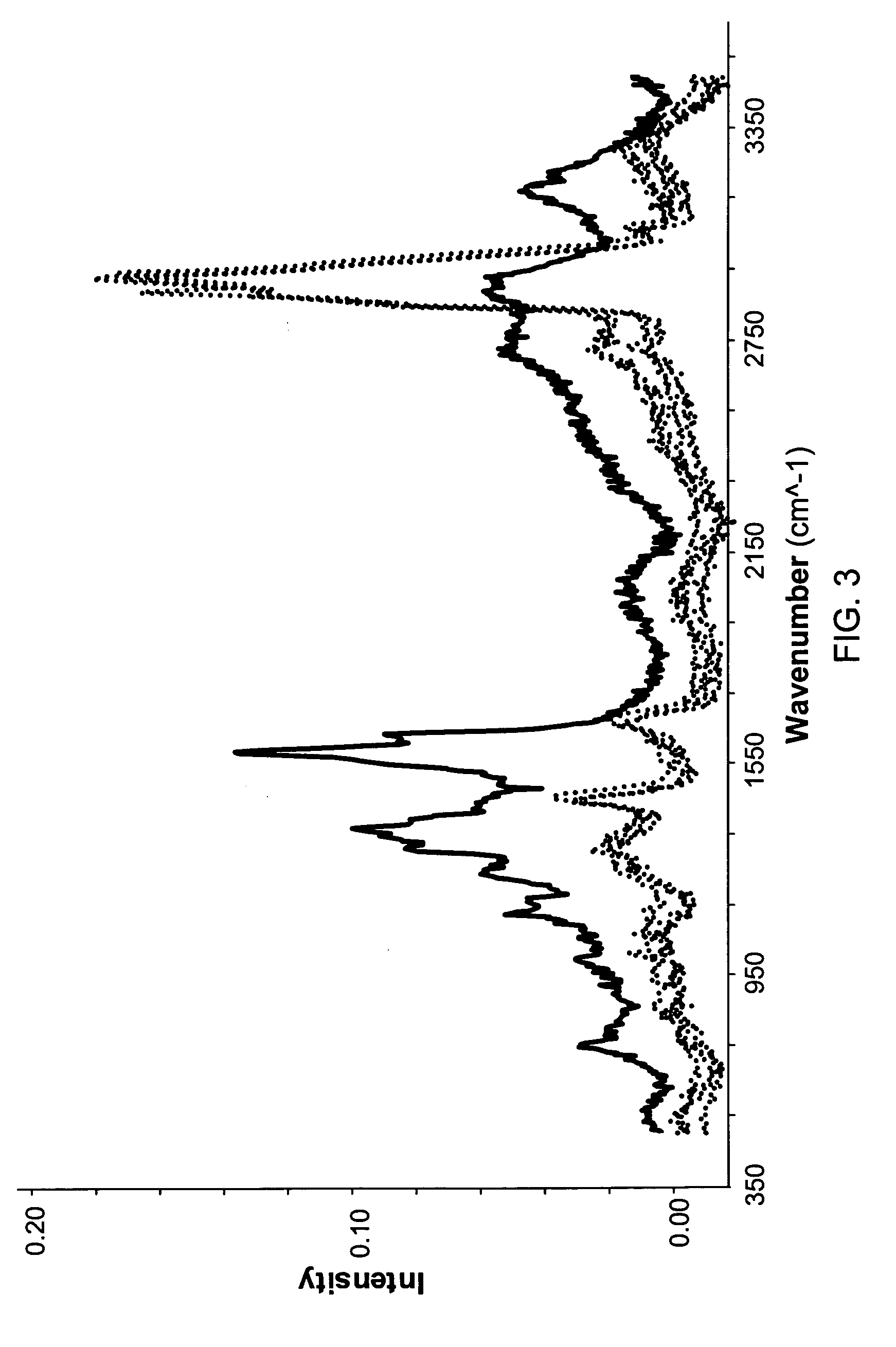Raman molecular imaging for detection of bladder cancer
a molecular imaging and bladder cancer technology, applied in the field oframan spectroscopy and mammalian cellular evaluation, can solve the problems of difficult detection of cancer cells, reduced productivity and quality of life achieved by advanced cancer patients, and significant cancers, so as to facilitate comparison, facilitate comparison, facilitate comparison
- Summary
- Abstract
- Description
- Claims
- Application Information
AI Technical Summary
Benefits of technology
Problems solved by technology
Method used
Image
Examples
example
[0092] The invention is now described with reference to the following Example. This Example is provided for the purpose of illustration only, and the invention is not limited to this Example, but rather encompasses all variations which are evident as a result of the teaching provided herein.
[0093] Raman molecular imaging (RMI) was used to distinguish cancerous and non-cancerous bladder cancer cells to demonstrate that RMI is useful for detection of bladder cancer.
[0094] RMI is an innovative technology that combines the molecular chemical analysis capacity of Raman spectroscopy with the power of high definition digital image microscopic visualization. This platform enables physicians and their assistants to identify both the physical architecture and molecular environment of cells in a urine sample and can complement, or even replace, current histopathological methods.
[0095] The data presented in this example demonstrate that the Raman scattering signal from bladder cancer tissue ...
PUM
| Property | Measurement | Unit |
|---|---|---|
| wavelength | aaaaa | aaaaa |
| Raman shift | aaaaa | aaaaa |
| Raman shift | aaaaa | aaaaa |
Abstract
Description
Claims
Application Information
 Login to View More
Login to View More - R&D
- Intellectual Property
- Life Sciences
- Materials
- Tech Scout
- Unparalleled Data Quality
- Higher Quality Content
- 60% Fewer Hallucinations
Browse by: Latest US Patents, China's latest patents, Technical Efficacy Thesaurus, Application Domain, Technology Topic, Popular Technical Reports.
© 2025 PatSnap. All rights reserved.Legal|Privacy policy|Modern Slavery Act Transparency Statement|Sitemap|About US| Contact US: help@patsnap.com



